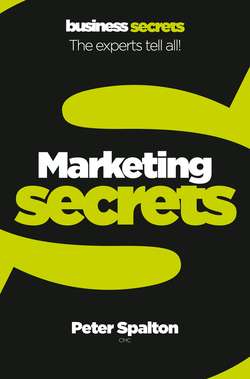Читать книгу Marketing - Peter Spalton - Страница 9
1.4 Customers need to be seduced
ОглавлениеFifty years ago people went to the local shops for most of what they needed. The shopkeeper knew them and took time to talk and ask about their family. In those days, shopping was relaxed and shopkeepers were usually friendly.
Gradually, though, the small local shops disappeared as the large chains and supermarkets took over. Shopping then became impersonal. It became transaction-based: you went to a shop, bought what you needed and left. As it didn’t really matter where you shopped, you weren’t loyal to any particular retail outlet. After all, you could get your favourite brands anywhere. But, at the start of this century, companies realized that they needed to engage with their customers to keep them coming back. Loyalty, lifestyles and aspirations became the buzzwords of the day in marketing.
The Apple example. In the early 1990s, Apple was a small, specialist computer company. Its customers were loyal and most of them worked in the fashion, design and media industries. But, in October 2001, the company launched the iPod, which was aimed at young people. It became a lifestyle purchase and a statement of freedom.
one minute wonder Think of a company that seduces you with it’s advertising and products. What is it about them? Now consider how you could do the same to your customers.
Two years later, the company introduced iTunes, which added a recurring revenue stream. Within seven years Apple had sold 150 million units and transformed the company and the entire music business.
The Emirates example. In the 1980s airlines were totally transaction based. If you wanted to fly, you bought a ticket and that was it. But Emirates broke the mould when it decided to sell the sensuous experience of flying. They changed their slogan to “Fly Emirates, keep discovering”, and put their 16,000 cabin staff in designer uniforms. With minimum cost, they dramatically increased the perceived value of flying Emirates. Since then, the company has won 400 industry awards.
The Red Bull example. In 1987, a European company launched a sports drink called Red Bull. Its marketing was aggressive and it sponsored sports and extreme activities: Formula 1 racing, snowboarding, surfing, skateboarding and windsurfing. It is clearly aimed at young men and now produces a monthly magazine called the Red Bulletin, available online, and free in many bars, clubs and hotels. With its memorable slogan, “Red Bull gives you Wings”, today the company sells more than 3 billion cans a year around the world.
All these companies have one thing in common. They’ve each found out how to seduce their customers effectively. You must learn how to do the same. It starts by clearly understanding what you do and what you want your customers to feel about you. Find out more about this in Secrets 2.2 and 5.10.
Learn to seduce your customers so that they keep wanting you.
